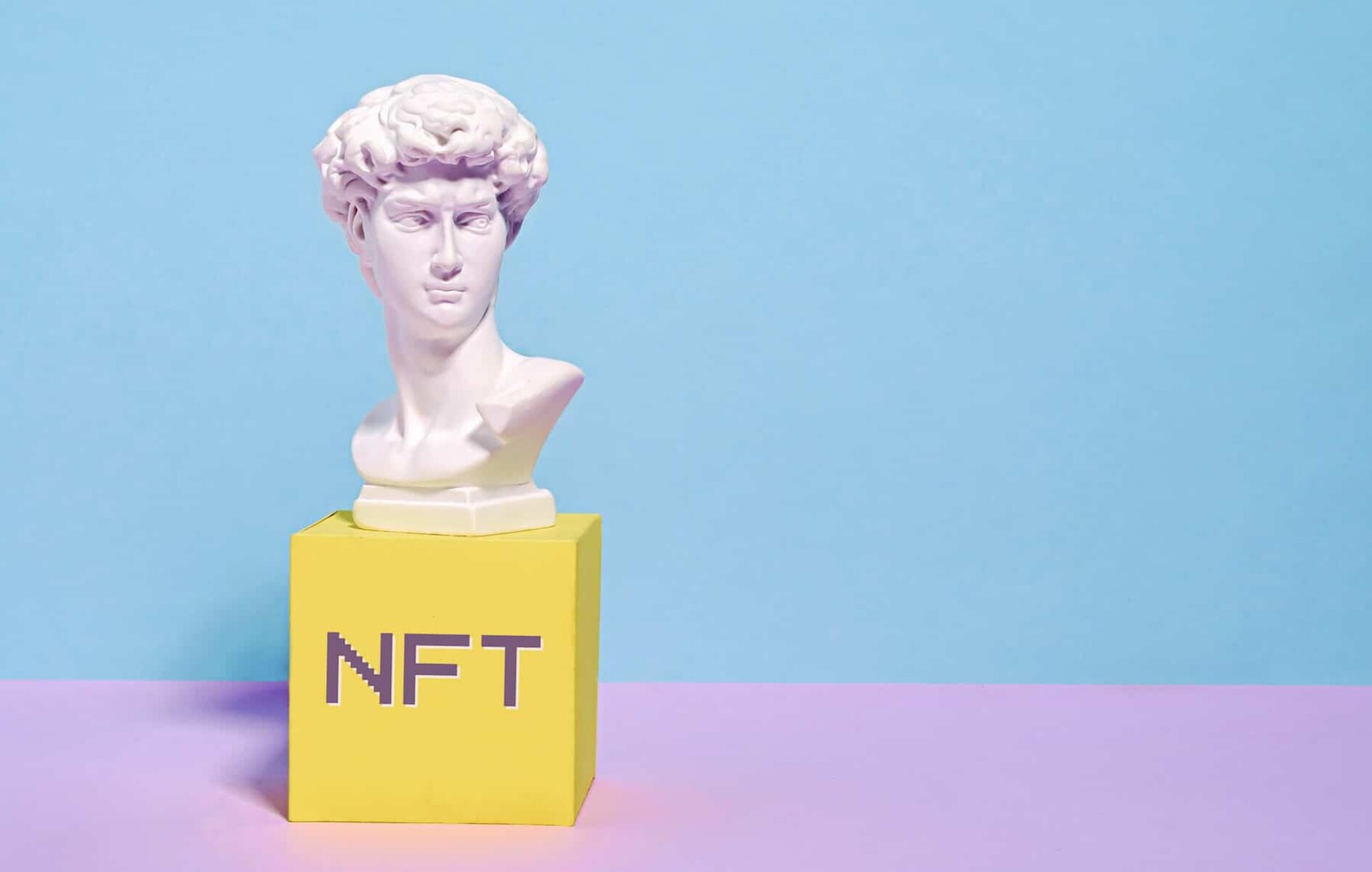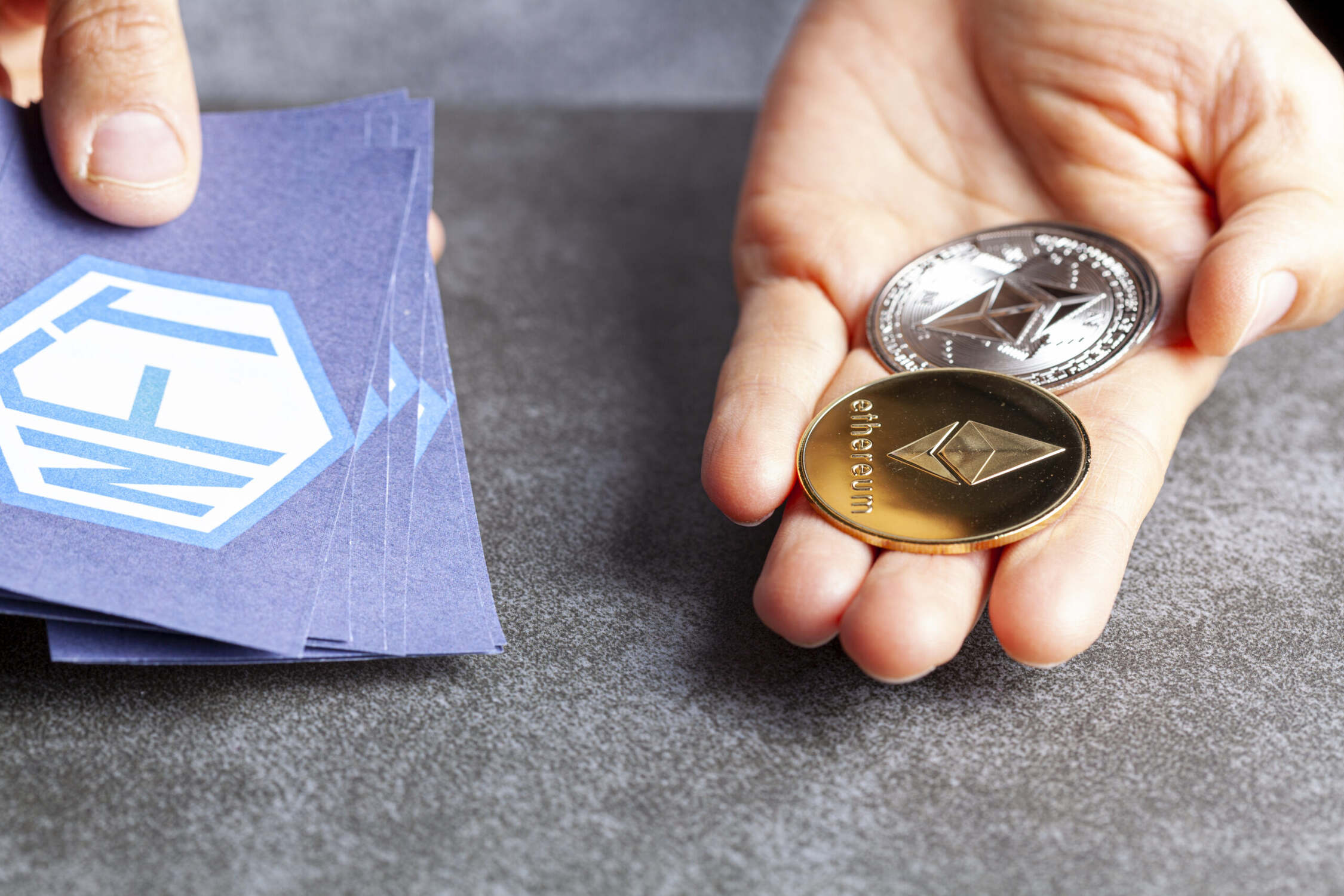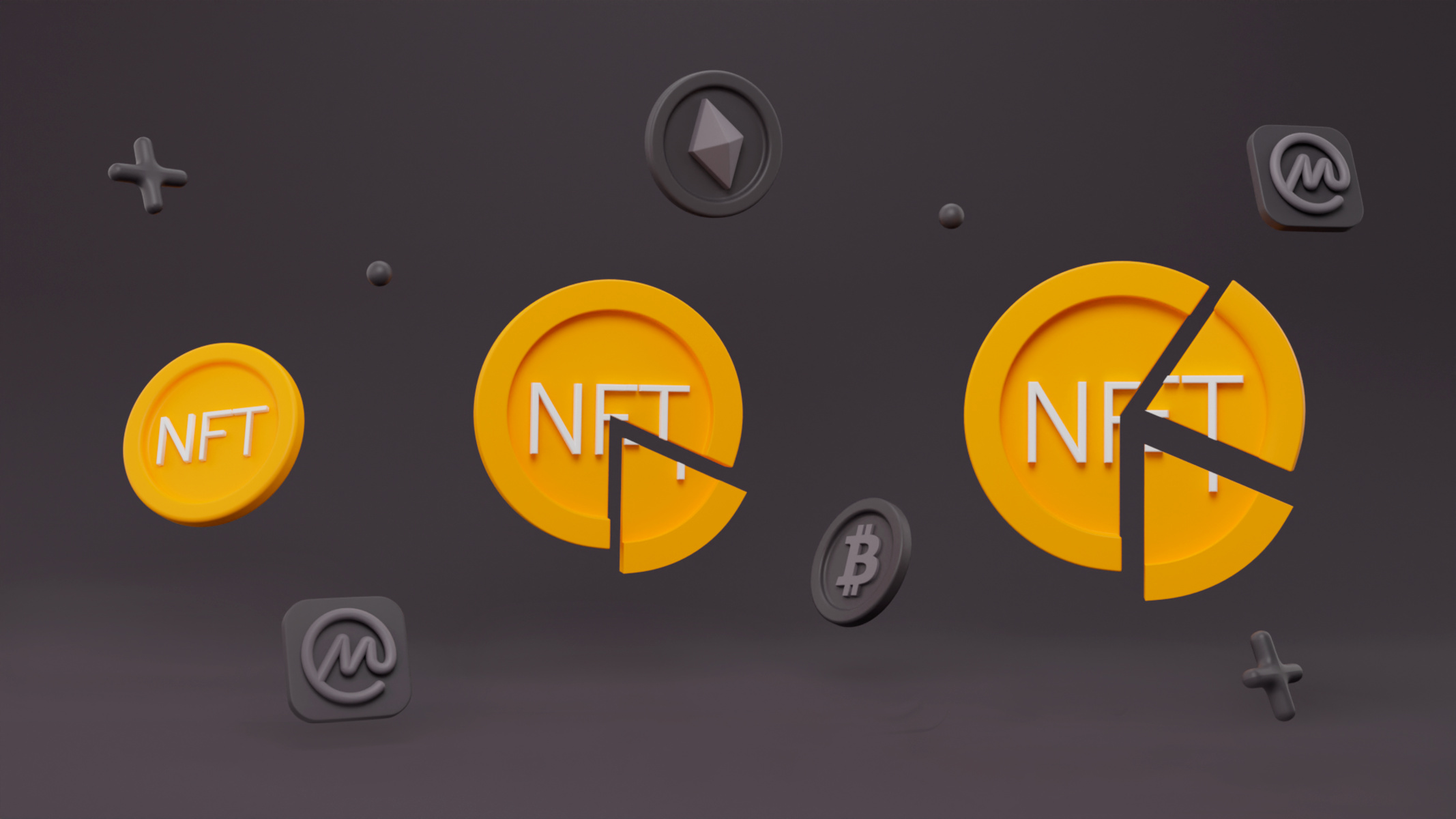Introduction
Welcome to the exciting world of NFT trading! Non-Fungible Tokens (NFTs) have taken the digital market by storm, revolutionizing the way we buy, sell, and own unique digital assets. From digital art collectibles to virtual real estate, NFTs have opened up a whole new realm of possibilities.
In this article, we will guide you through the basics of NFT trading and provide valuable insights on how to get started in this fast-growing market. Whether you’re an art enthusiast, a cryptocurrency investor, or simply curious about the NFT hype, this guide aims to equip you with the necessary knowledge to dive into the world of NFT trading.
Before we delve into the specifics, it’s important to understand what NFTs are and how they differ from traditional cryptocurrencies. Unlike cryptocurrencies such as Bitcoin or Ethereum, which are fungible and can be exchanged on a like-for-like basis, each NFT is unique and cannot be exchanged on an equal value basis. Each NFT comes with a distinct digital signature that proves ownership, making it impossible to replicate or counterfeit.
NFTs have gained popularity due to their ability to represent ownership of both digital and physical assets. This has opened up a whole new market for creators and collectors to trade and profit from digital creations, such as artwork, music, videos, virtual real estate, and even virtual fashion items.
Now that the stage is set, let’s dive into the intricacies of NFT trading and explore how you can get started on your NFT trading journey. From setting up a cryptocurrency wallet to choosing the right NFT marketplace and executing successful trades, we’ll cover it all. By the end of this guide, you’ll have a solid understanding of the key steps to take in order to navigate the world of NFT trading with confidence.
What are NFTs?
NFTs, or Non-Fungible Tokens, have gained immense popularity as a new form of digital asset ownership. Essentially, NFTs are unique digital tokens that exist on a blockchain, typically built on the Ethereum network. Unlike cryptocurrencies such as Bitcoin or Ethereum, which are interchangeable and have the same value, NFTs cannot be exchanged on a like-for-like basis because each NFT represents something unique and indivisible.
One of the key features of NFTs is their ability to represent ownership and authenticity of digital or physical assets. This means that through an NFT, you can prove that you own a specific piece of art, a collectible, a virtual item, or even a real-world asset. The ownership and transaction history of an NFT are recorded on the blockchain, making it transparent and verifiable.
NFTs have gained traction in various industries, particularly in the art world. Artists can create and sell digital artworks as NFTs, allowing collectors to own unique and authenticated digital copies. With NFTs, artists can receive royalties every time their artwork is resold, thanks to the smart contract functionality embedded in the tokens.
Apart from art, NFTs have expanded into other domains. Sports collectibles, virtual real estate, music albums, virtual fashion items, and even virtual pets are being traded as NFTs. The concept of owning a unique digital item and trading it in a secure and decentralized manner has captured the attention of both creators and collectors.
It’s important to note that owning an NFT does not grant you actual copyright or intellectual property rights to the underlying asset. Instead, it signifies proof of ownership of a specific edition or version of the digital asset. The original creator usually retains the copyright, unless explicitly stated otherwise.
In summary, NFTs are unique digital tokens that represent ownership and authenticity of various digital or physical assets. They have opened up a new world of possibilities for creators, collectors, and investors. With the ability to trade and profit from digital creations in a decentralized and transparent manner, NFTs have disrupted traditional models of ownership and have become a significant force in the digital economy.
How does NFT trading work?
NFT trading involves buying, selling, and exchanging unique digital assets represented as non-fungible tokens. While the concept may seem complex at first, it can be broken down into a few key steps to understand how the process works.
1. Creation and Minting: Artists and creators mint NFTs by turning their digital assets into unique tokens. This process involves uploading the digital asset to an NFT marketplace, specifying the token’s details, such as name, description, and supply. Minting an NFT establishes its authenticity and creates a digital record of its ownership on the blockchain.
2. Listing and Selling: Once the NFT is minted, it can be listed for sale on an NFT marketplace. Sellers set a price or opt for an auction-style listing, allowing buyers to place bids. When a buyer agrees to purchase the NFT at the listed price or wins the auction, the transaction is executed through the blockchain, transferring ownership to the buyer.
3. Ownership and Token Metadata: Each NFT contains metadata that includes information about the asset it represents. This metadata can include details such as the artist’s name, creation date, edition number, and any additional information relevant to the asset. The ownership and transaction history of the NFT are recorded on the blockchain, providing a verifiable and transparent record of its journey.
4. NFT Wallets: To engage in NFT trading, participants need an NFT wallet. An NFT wallet is a digital wallet specifically designed to store, manage, and trade NFTs. These wallets interact with the blockchain and allow users to view, buy, sell, and transfer NFTs securely. Popular NFT wallets include MetaMask, Trust Wallet, and MyEtherWallet.
5. NFT Marketplaces: NFT marketplaces serve as platforms where users can discover, buy, and sell NFTs. These marketplaces provide a wide range of NFT listings across different categories, including art, music, collectibles, and more. Some popular NFT marketplaces include OpenSea, Rarible, SuperRare, and NBA Top Shot. Each marketplace has its own unique features, fees, and policies, so it’s essential to research and choose the right platform for your trading needs.
6. Secondary Market Trading: NFT trading is not limited to primary sales. Once an NFT is purchased, it can be resold on the secondary market. This gives collectors and investors an opportunity to profit from the appreciation of certain NFTs. Secondary market trading occurs between individual buyers and sellers on NFT marketplaces or through dedicated NFT auction platforms.
In essence, NFT trading involves creators minting unique digital assets, listing them on NFT marketplaces for sale, and buyers purchasing these NFTs using cryptocurrency. The ownership and transaction history of NFTs are verified and recorded on the blockchain, providing transparency and immutability. With the growth of NFTs, the trading ecosystem continues to evolve, offering exciting opportunities for collectors and artists alike.
Setting up a cryptocurrency wallet
Before you can start trading NFTs, you’ll need to set up a cryptocurrency wallet that supports NFTs. These wallets serve as the digital storage for your cryptocurrencies and NFTs, allowing you to securely store, manage, and interact with your digital assets. Here are the key steps to set up a cryptocurrency wallet for NFT trading:
1. Choose a Wallet: There are several cryptocurrency wallets available, each with its own features, security measures, and supported blockchains. Look for wallets that specifically support NFTs and have a user-friendly interface. Popular NFT wallet options include MetaMask, Trust Wallet, and MyEtherWallet. Research each option and choose the one that suits your needs.
2. Download and Install: Once you’ve chosen a wallet, visit the official website or relevant app store to download and install the wallet application. Make sure you’re downloading from a trusted source to avoid any potential security risks.
3. Create a New Wallet: Launch the wallet app and follow the instructions to create a new wallet. This typically involves creating a strong password and securely storing a recovery phrase or seed phrase. The recovery phrase is a series of random words that act as a backup to restore your wallet in case of loss or device failure. Make sure to write down and store the recovery phrase in a safe place.
4. Secure Your Wallet: Once your wallet is created, take additional security measures to protect your funds and assets. Enable two-factor authentication (2FA) if available, use a hardware wallet for added security, and be cautious of phishing attempts and suspicious links.
5. Add Funds: After securing your wallet, you’ll need to add funds by depositing cryptocurrency. NFTs are typically bought and sold using cryptocurrencies such as Ethereum (ETH). You can purchase Ethereum on cryptocurrency exchanges and transfer it to your wallet address. Follow the instructions provided by the wallet app to receive and store your Ethereum.
6. Connect to NFT Marketplaces: To interact with NFT marketplaces, you’ll need to connect your wallet to the marketplace platform. Most NFT marketplaces integrate with popular wallets such as MetaMask. Follow the instructions provided by the marketplace to connect your wallet and grant permission for the wallet to interact with the marketplace.
7. Backup and Security: Regularly backup your wallet and keep your recovery phrase secure. Ensure your operating system and wallet app are up to date with the latest security patches. Be cautious when entering your wallet information and use strong, unique passwords for your wallet and associated accounts.
Setting up a cryptocurrency wallet is a crucial step in getting started with NFT trading. By following these steps, you’ll have a secure and convenient way to store and manage your cryptocurrencies and NFT assets. Remember to stay informed about the latest security practices and protect your wallet from unauthorized access. With a reliable wallet, you’ll be ready to explore the exciting world of NFT trading.
Choosing an NFT marketplace
When it comes to NFT trading, choosing the right NFT marketplace is crucial. NFT marketplaces serve as platforms where creators can showcase and sell their NFTs, while buyers can discover and purchase unique digital assets. With several marketplaces available, each with its own features, reputation, and user base, here are some factors to consider when choosing an NFT marketplace:
1. Popularity and User Base: Look for NFT marketplaces that have a large and active user base. Marketplaces with a significant community of buyers and sellers provide more opportunities for trading and discovering unique NFTs. Popular NFT marketplaces like OpenSea and Rarible are known for their wide range of listings and active user engagement.
2. Supported Blockchains: Consider the blockchain on which the NFT marketplace operates. Ethereum is currently the most widely used blockchain for NFTs. However, there are also marketplaces that support other blockchains like Binance Smart Chain or Flow. Ensure that your chosen marketplace is compatible with the blockchain your NFTs are created on or the blockchain you prefer to use.
3. Transaction Fees: NFT marketplaces charge various types of fees, including listing fees, transaction fees, and gas fees. Gas fees are associated with the Ethereum blockchain and can fluctuate depending on network congestion. Consider the fee structure and compare it across different marketplaces to understand the cost implications of trading NFTs.
4. Security and Authenticity: Look for NFT marketplaces that prioritize security and authenticity. A reputable marketplace will have measures in place to combat counterfeit or fraudulent NFT listings. Consider the marketplace’s verification process, community guidelines, and reputation in the NFT ecosystem to ensure a safe and trustworthy trading environment.
5. User Experience and Features: Evaluate the user experience and features offered by different marketplaces. Some marketplaces offer advanced search filters, bidding options, and customizable storefronts for creators. Consider whether the marketplace’s interface is user-friendly, intuitive, and aligned with your preferences and requirements as a buyer or seller.
6. Additional Benefits: Some NFT marketplaces offer unique features or benefits that may align with your interests. For example, certain marketplaces focus on specific categories like digital art, collectibles, or gaming NFTs. Others may offer additional services like NFT fractionalization or lending platforms. Consider these value-add features when making your decision.
7. Community and Social Engagement: Join communities or forums related to NFT trading to gather insights and feedback from experienced traders. Engaging with the community can provide valuable information about different NFT marketplaces and their reputation, helping you make an informed decision.
Remember, choosing an NFT marketplace is a personal decision based on your trading objectives, preferences, and the specific NFTs you are interested in. It’s recommended to research, compare, and even test out different marketplaces to find the one that best suits your needs and aligns with your trading goals.
Researching and evaluating NFTs
Researching and evaluating NFTs is a crucial step before making any purchase in the NFT market. With a wide range of digital assets available, conducting thorough research will help you make informed decisions and avoid potential pitfalls. Here are some key factors to consider when researching and evaluating NFTs:
1. Creator Reputation: Start by researching the creator of the NFT. Look into their background, previous works, and reputation within the NFT community. Established artists or creators with a strong track record may add more value to the NFT and increase its potential for future appreciation.
2. Authenticity and Ownership: Verify the authenticity and ownership of an NFT. Check if the creator or the NFT marketplace provides proof of ownership and verifies the token’s authenticity. Utilize third-party platforms and tools that authenticate NFTs, such as NFT marketplaces that include verification badges or platforms that specialize in digital asset verification.
3. Rarity and Scarcity: A key aspect of NFTs is their rarity and scarcity. Take note of the total supply of the NFT and the specific edition or rarity level of the token you are interested in. NFTs that are part of limited editions, have unique attributes, or include bonus features may have a higher value and potential for appreciation.
4. Market Trends and Demand: Stay up-to-date with market trends and demands. Regularly check NFT marketplaces to see what types of NFTs are popular and in high demand. Consider emerging trends and evolving preferences within the NFT community to identify investment opportunities or collectibles that align with your interests.
5. Utility and Functionality: Evaluate the utility and functionality of the NFT. Some NFTs offer additional benefits or access to exclusive content, virtual experiences, or membership programs. Understand what unique features or use cases the NFT provides and assess whether they align with your interests or offer added value.
6. Community Engagement: Engage with the community surrounding the NFT or the creator. Join social media platforms, online forums, or Discord channels where the NFT community gathers. Participate in discussions, ask questions, and seek feedback from experienced traders and collectors. Community engagement can provide valuable insights and perspectives on the potential value and trajectory of an NFT.
7. Marketplace History: Examine the history of sales and trading within the NFT marketplace. Look for active trading volumes, previous sale prices, and successful transactions for similar NFTs. This information can give you an indication of the market demand for the specific type of NFT you are considering.
Remember, researching and evaluating NFTs requires due diligence and an understanding of the specific market dynamics. Every NFT is unique, and factors that determine value can vary widely. Conduct thorough research, evaluate multiple aspects of the NFT, and seek insights from the community to make informed decisions and maximize your trading potential.
Buying your first NFT
Congratulations on taking the exciting step of buying your first NFT! As you enter the world of NFT trading, here are some key steps to guide you through the process of purchasing your first NFT:
1. Define Your Interests: Determine what type of NFT you are interested in, whether it’s digital art, collectibles, virtual real estate, or any other category. Narrowing down your interests will help you focus your search and find NFTs that truly resonate with you.
2. Research and Explore: Spend time researching and exploring different NFT marketplaces. Look for NFTs that align with your interests and meet your criteria in terms of quality, rarity, and creator reputation. Take note of the market trends and pricing within the specific category or niche you are interested in.
3. Set a Budget: Determine how much you are willing to spend on your first NFT. It’s important to set a budget that you are comfortable with and stick to it. Remember that the prices of NFTs can vary widely, and it’s possible to find valuable and enjoyable NFTs within different price ranges.
4. Connect Your Wallet: Ensure that your cryptocurrency wallet is connected to the NFT marketplace you have chosen. Follow the instructions provided by the marketplace to link your wallet and grant the necessary permissions to interact with the platform.
5. Browse and Compare Listings: Browse through the listings on the marketplace and compare different NFTs that catch your attention. Take into account factors such as the artwork or design, rarity, edition number, and any additional features or benefits offered by the NFT.
6. Review Details and Conditions: Carefully review the details and conditions of the NFT listing. Check if there are any royalties or additional fees associated with the NFT, as well as any limitations or restrictions on its use or transfer. Pay attention to the ownership history, authenticity verification details, and any supporting documentation provided by the creator.
7. Make Your Purchase: Once you have found the NFT you want, follow the platform’s instructions to initiate the purchase. Review the payment details, including the amount in cryptocurrency and any applicable transaction fees. Confirm the transaction and wait for it to be processed on the blockchain. The NFT will be transferred to your wallet once the transaction is complete.
8. Keep Records and Secure Your NFT: After purchasing your first NFT, make sure to keep records of the transaction, including proof of ownership and any associated documentation. Take steps to secure your NFT and store it safely in your wallet or use additional security measures such as hardware wallets for added protection.
Remember, buying your first NFT is an exciting milestone, but it’s important to approach it with careful consideration. Take your time to research, explore, and evaluate different options before making a purchase. By following these steps, you’ll be well on your way to building your NFT collection and participating in the vibrant NFT trading community.
Selling your NFTs
Now that you have acquired some NFTs and enjoyed their ownership, you may be considering selling one or more of them. Selling your NFTs can be an exciting way to profit from your investments or create opportunities to acquire new assets. Here are some important steps to follow when selling your NFTs:
1. Evaluate the Market: Before listing your NFT for sale, it’s essential to evaluate the current market conditions. Research similar NFTs in your chosen category or niche to understand recent sales, pricing trends, and demand. This analysis will help you set a competitive price and optimize your chances of a successful sale.
2. Select the Right Platform: Choose the NFT marketplace where you intend to sell your NFT. Consider factors such as the platform’s popularity, user base, and transaction fees. Look for platforms that have a strong track record and a vibrant community of buyers actively trading in the category of your NFT.
3. Create an Engaging Listing: Craft an enticing and informative listing for your NFT. Include high-quality visuals or videos of the NFT, a clear and detailed description, and any unique features or benefits it offers. Present your NFT in a way that captures the attention of potential buyers and highlights its value.
4. Set a Competitive Price: Pricing your NFT appropriately is crucial. Consider the current market value, rarity, edition number, and any additional attributes or benefits the NFT possesses. Price the NFT competitively to attract potential buyers, taking into account any royalties or fees associated with the NFT and the platform’s transaction fees.
5. Market and Promote Your Listing: Actively promote your NFT listing to increase visibility and attract potential buyers. Leverage social media platforms, online forums, and communities dedicated to NFT trading to showcase your NFT and engage with potential buyers. Utilize relevant hashtags, share engaging content, and participate in discussions to generate interest in your listing.
6. Respond to Inquiries: Be responsive to inquiries and messages from interested buyers. Provide prompt and relevant information about your NFT, addressing any questions or concerns potential buyers may have. Building a positive reputation as a seller can help attract more buyers and facilitate smoother transactions.
7. Finalize the Sale: When a buyer expresses interest and agrees to purchase your NFT, guide them through the payment and transfer process. Follow the instructions provided by the marketplace for finalizing the sale securely. Once the transaction is complete, transfer the ownership of the NFT to the buyer’s wallet and document the sale for your records.
8. Consider After-Sale Support: Provide appropriate after-sale support to the buyer. Address any queries or concerns that may arise after the transaction, ensuring a positive experience for both parties. Building a good reputation as a seller can contribute to future sales and relationships within the NFT trading community.
By following these steps, you can effectively sell your NFTs and make the most of your investments. Remember to stay informed about market trends and pricing fluctuations, consistently evaluate your collection, and adapt your selling strategies accordingly. Embrace the dynamic NFT marketplace, and enjoy the process of connecting with buyers and fellow enthusiasts as you navigate the world of selling NFTs.
Storing and protecting your NFTs
As a proud owner of NFTs, it’s crucial to prioritize the storage and protection of your digital assets. NFTs are stored in digital wallets, and ensuring the security of these wallets is essential to safeguard your investments. Here are some important steps to consider when storing and protecting your NFTs:
1. Choose a Secure Wallet: Select a reputable and secure wallet specifically designed for storing NFTs. Hardware wallets, such as Ledger or Trezor, provide an added layer of security by storing your assets offline. Software wallets like MetaMask, Trust Wallet, and MyEtherWallet are also popular and offer a good balance of security and convenience.
2. Use Two-Factor Authentication (2FA): Enable two-factor authentication on your wallet and other associated accounts. 2FA adds an extra layer of security by requiring a unique verification code or device in addition to your password. This helps protect your NFTs from unauthorized access.
3. Keep Your Wallet Software Updated: Regularly update your wallet software to ensure you have the latest security patches. Developers frequently release updates to address vulnerabilities and improve overall security. Staying up-to-date with these updates is crucial in keeping your NFTs safe.
4. Secure Your Recovery Phrase: Store your wallet recovery phrase or seed phrase securely. This phrase is used to restore your wallet if you lose access to it. Write it down and keep it in a safe place offline, such as a locked drawer or a hardware device like a secure USB drive. Do not store it digitally or share it with others, as it could compromise the security of your NFTs.
5. Be Wary of Phishing Attempts: Be cautious and vigilant against phishing attempts and scams. Fraudsters may try to trick you into revealing your wallet information or recovery phrase through fake websites or phishing emails. Always verify the authenticity of the websites you visit and the emails you receive, and never share your private information with unknown sources.
6. Backup Your Wallet: Regularly back up your wallet to ensure you have a copy of your NFTs in case of hardware failure or loss of access. Follow the backup instructions provided by your wallet software and securely store the backup offline to mitigate any potential risks.
7. Consider Cold Storage: For added security, consider cold storage solutions for long-term storage of your NFTs. Cold storage refers to keeping your NFTs completely offline, usually on a hardware device or paper wallet. This eliminates the risk of online threats and ensures the safety of your NFTs in case of any online vulnerabilities.
8. Stay Informed: Keep yourself updated on the latest security practices and trends in the NFT ecosystem. Stay informed about potential vulnerabilities and emerging security measures to protect your NFTs effectively. Engage with the NFT community, join discussions, and seek advice from experienced traders and collectors to stay ahead of potential security risks.
By following these steps, you can ensure that your NFTs are stored securely and protected from potential threats in the digital realm. Taking proactive measures to secure your wallet and adhering to best practices will give you peace of mind and allow you to fully enjoy your journey in the world of NFTs.
NFT trading strategies and tips
NFT trading can be an exciting and potentially profitable venture. To maximize your opportunities and make informed decisions, consider the following strategies and tips:
1. Do Your Research: Stay informed about the latest trends, market dynamics, and emerging artists within the NFT ecosystem. Research and evaluate the background and reputation of artists, the demand for specific categories, and the history of successful sales. Understanding the market will help you identify valuable opportunities and make better-informed decisions.
2. Diversify Your Portfolio: Consider diversifying your NFT holdings across different categories, artists, and platforms. This reduces the risk of having all your investments tied to one particular asset or platform. Diversification allows you to take advantage of various opportunities and potential growth areas within the NFT market.
3. Set Clear Goals: Define your investment goals and trading strategy. Determine whether you’re investing for long-term appreciation or engaging in short-term trading. Setting clear goals will help you make focused decisions and avoid impulsive trading based on market fluctuations or hype.
4. Stay Up-to-Date with Market Trends: Continuously monitor market trends, news, and developments within the NFT space. Sudden shifts in market sentiment or emerging trends can present opportunities or risks. Stay informed through online communities, social media platforms, and NFT-specific news sources.
5. Follow Influencers and Experts: Interact with experienced NFT traders and collectors. Follow influencers, artists, and experts within the NFT community on social media. Engaging with the community can provide valuable insights, help you discover emerging artists, and keep you informed about exclusive drops and opportunities.
6. Manage Transaction Fees: Take transaction fees into account when buying and selling NFTs. Gas fees on the Ethereum network can fluctuate, making it important to factor them into your trading strategy. Consider the potential profits and costs associated with each transaction to ensure your trades are economically viable.
7. Patience in Trading: NFT trading requires patience. Price fluctuations and market sentiment can cause rapid changes in value. Avoid making impulsive decisions based on short-term market movements and focus on your long-term investment goals.
8. Look for Hidden Gems: Explore emerging artists or up-and-coming categories within the NFT space. New artists or categories may present opportunities to acquire undervalued assets that have the potential for significant appreciation.
9. Engage in the Community: Participate in NFT communities, join discussions, and attend events or webinars. Learning from and networking with fellow NFT enthusiasts can provide valuable insights, access to exclusive drops and collaborative opportunities.
10. Stay Secure: Prioritize security by using reputable wallets, enabling two-factor authentication, and keeping your wallet and recovery phrase safe. Be cautious of phishing attempts, suspicious links, and fraudulent marketplaces. Securely back up your digital assets and stay informed about the latest security practices.
Remember, NFT trading can be highly speculative, and there are risks involved. These strategies and tips are provided as general guidance, and it’s important to customize your approach based on your risk tolerance, investment goals, and personal preferences. Continually educate yourself, adapt to market dynamics, and refine your strategies as you gain more experience in the exciting world of NFT trading.
Conclusion
Navigating the world of NFT trading is an exhilarating journey that offers unique opportunities to own, trade, and profit from digital assets. By understanding the fundamentals of NFTs, setting up a cryptocurrency wallet, and choosing the right marketplace, you can embark on your NFT trading adventure confidently.
Whether you’re an art enthusiast, a collector, or an investor, conducting thorough research, evaluating NFTs, and following effective trading strategies will help you make informed decisions and maximize your potential for success. Keep in mind the importance of securely storing and protecting your NFTs by using reputable wallets, maintaining backups, and staying vigilant against potential security risks.
NFT trading is a dynamic and rapidly evolving market. Staying informed about market trends, engaging with the community, and continuously learning will be key to your long-term success. Remember to set clear goals, diversify your portfolio, and exercise patience when making trading decisions.
While the potential for significant profits exists in NFT trading, it’s essential to approach it with caution and an understanding of the inherent risks involved. NFT valuations can be volatile, and market sentiment can fluctuate rapidly. As with any investment, only invest what you can afford to lose and consider seeking professional advice if needed.
In conclusion, embrace the excitement and possibilities that NFT trading offers, but do so responsibly and with a commitment to ongoing learning and development. By following the strategies and tips outlined in this guide, you’ll be well-equipped to navigate the NFT landscape and participate in this transformative digital economy with confidence.

























